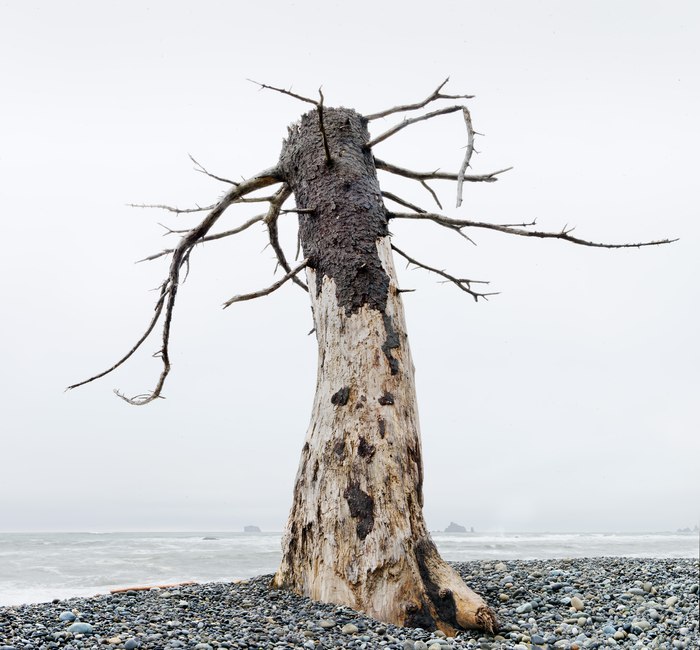Located along Washington State’s Pacific coast, Rialto Beach is covered by cobblestones and sand relentlessly assaulted by encroaching and sometimes ferocious ocean erosion. Here, a lone Sitka spruce leans into the onshore winds and waves, which have scrapped away at its lower trunk, leaving bark only on the upper part of its leeward side.
Sitka trees grow along a narrow coastal strip from northern California to southern Alaska. Following the last retreat of the Cordilleran Ice Sheet 14,500 years ago, they were a pioneer species that quickly re-established themselves as the ice receded. This coast’s mild climate and wet seasons help these trees thrive, and frequent fog tempers the sun’s heat during the summer.
Its expressive, pendulous limbs invite anthropomorphic interpretations; even in death, the appearance of life persists. Native peoples migrated from Asia to this coast after the ice sheet melted and arrived not long after these trees began to flourish. These First Americans used its pitch for glue, caulking, and varnish; its roots, bark, and branch tips for medicinal purposes; and its inner bark and young shoots for emergency food. They believed Sitka trees held healing and magical powers; during winter ceremonies, they used its boughs to protect dancers while they conjured spirits.
- James Baker

